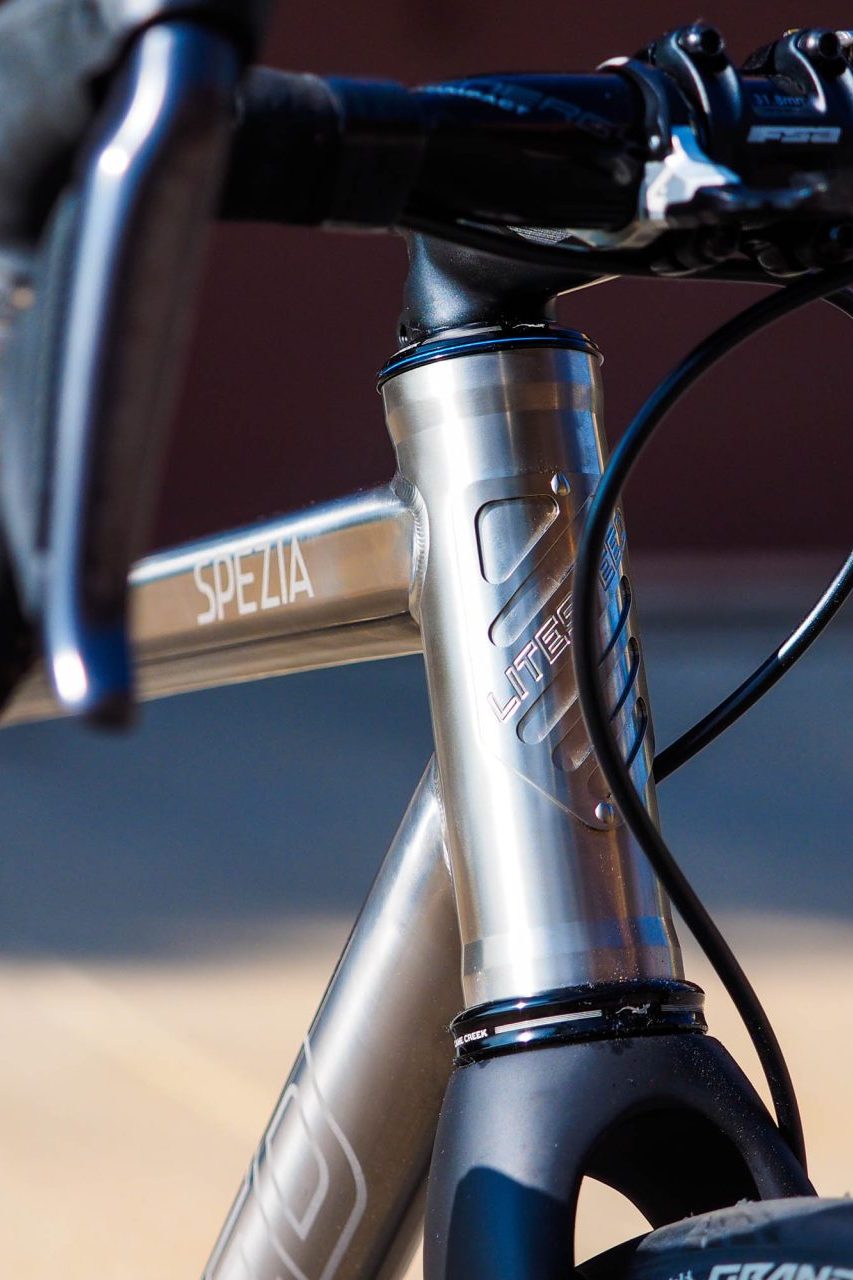Litespeed’s new Spezia flagship road bike is a rolling showcase of modern titanium frame construction what with its distinctively multi-sided top tube, oversized proportions, and gorgeous CNC-machined dropouts. The mostly straight lines, modestly sloping top tube, and raw brushed finish lend it a traditional aesthetic that stands apart against the sea of carbon fiber out there, and the generous 35 mm-wide tire clearance lends it a little extra versatility, too.
It’s also very light with a claimed frame weight of barely 1,100 g, it handles with impressive precision, and all things considered, it’s even a pretty good value for a premium made-in-USA titanium frame.
Yet try as I might, I just couldn’t fall in love with the thing.
The short of it: Litespeed’s best materials and construction techniques combined into a lightweight disc-brake road frame.
Good stuff: Looks fantastic, striking top tube construction, slick CNC-machined dropouts, excellent weight, great tire clearance, classic aesthetic; lots of geometry, finish, and build kit options.
Bad stuff: Overly firm ride quality, soft rear end, options add up quickly.

Metal mastery
While steel and aluminum frames use a broad range of alloys, titanium frames are predominantly made of the same basic 3/2.5 blend, where the base titanium is augmented with about 3% aluminum, 2.5% vanadium, and a few other trace elements to increase its strength as compared to commercially pure titanium that doesn’t have anything else added in. The other titanium alloy commonly used is 6/4 (6% aluminum, 4% vanadium), although that’s usually restricted to machined bits like dropouts and various smaller fittings since it can’t be formed into a tube using conventional means.
That hasn’t stopped Litespeed, though.
The Tennessee-based brand has been dabbling with 6/4 for more than two decades, even using it for just about all of the Vortex road model in the late 1990s. The Spezia only uses it for the top tube, but what a top tube it is. Litespeed starts with a flat sheet of 6/4, iteratively bending it to form a distinctively creased, flattened, and oversized cylinder. The seam is then welded and sanded to make it look like it came out of the die that way. The same 6/4 titanium alloy is also used for the compact CNC-machined dropouts, including the impressively tidy flat-mount brake interface on the non-driveside.
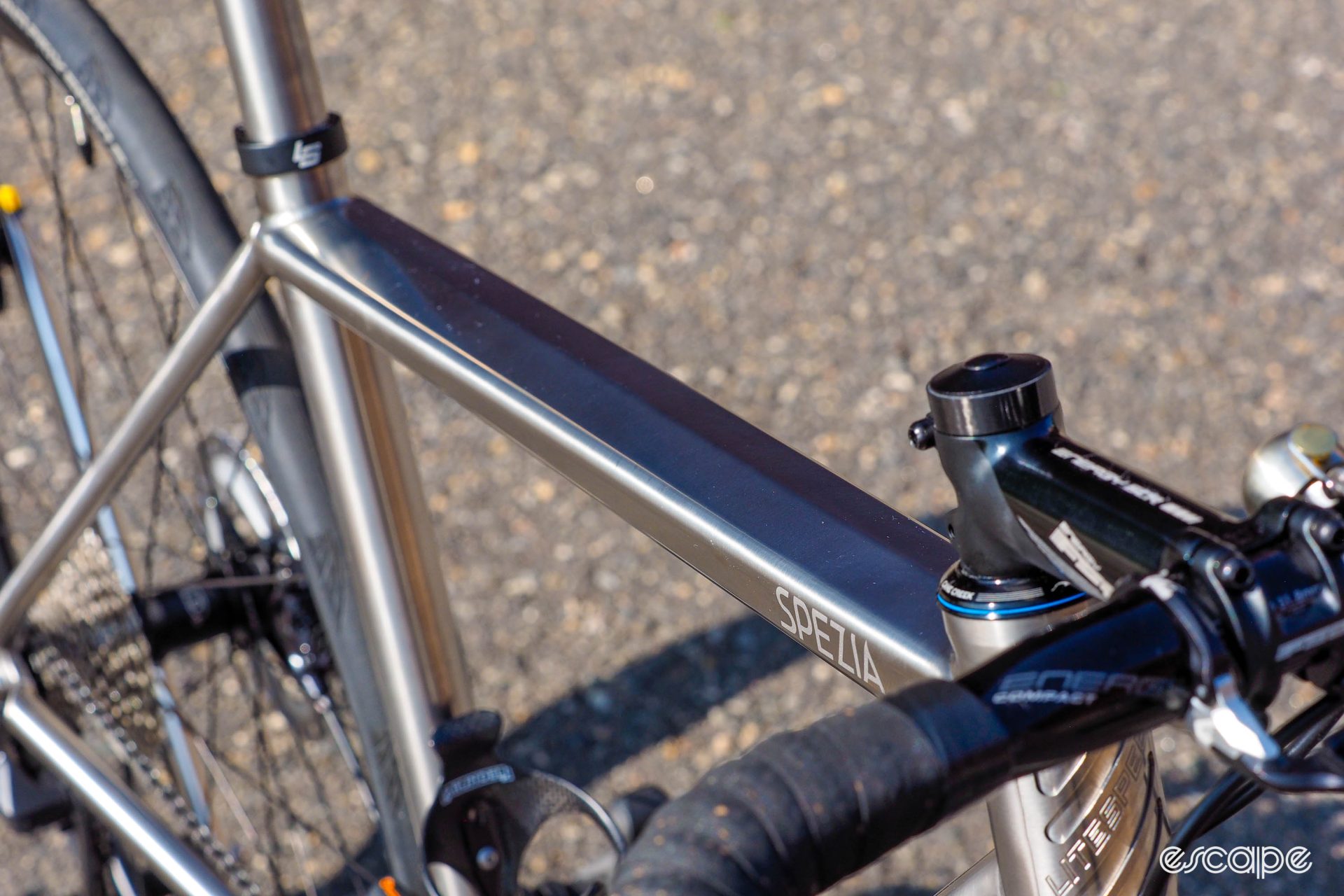
The rest of the Spezia frame uses more conventional 3/2.5 titanium tubing, but even that isn’t exactly off-the-shelf straight pipe.
Litespeed went for more stiffness than usual on the Spezia, so like the top tube, the down tube and seat tube are bigger than typical. Litespeed forms the down tube into a rounded triangular cross-section that’s a substantial 41 mm wide and 47 mm tall, and while the seat tube features a more conventional 35 mm-diameter round profile, it’s sized to fit an oversized 31.6 mm seatpost instead of the more common 27.2 mm one. Both the down tube and seat tube are then ovalized laterally at the bottom bracket, too. These are proportions more often found in carbon frames.
Out back, the 16 mm-diameter seatstays take a straight path from end to end, but they’re slightly flattened front-to-back and widely spaced to match the broad top tube, wrapping around the top tube in a way that will remind some of the earlier-generation Cannondale SuperSix Evo. Down below, the 20 mm-diameter chainstays sport a single bend for crankarm and heel clearance, and they’re slightly flattened near the bottom bracket shell to fit larger-volume tires. They’re also joined to the bottom bracket shell closer to the underside instead of right on center to provide more weld area.

Interestingly for a flagship model from a premium titanium-only brand, Litespeed doesn’t specifically refer to the Spezia’s tubing as butted – even though it apparently is, which shouldn’t be surprising given its impressively low 1,120-gram claimed frame weight. The head tube and bottom bracket shell are quite obviously butted externally, but much of the handiwork on the rest of the frame is hidden away inside.
“None of the tubes are straight gauge; we manipulate the heck out of the walls of every tube,” explained Litespeed’s lead engineer, Brad DeVaney. “No tube in this frame is left alone. The visual elements, such as the bottom bracket and head tube, are easy to see. As an example, there’s over 100 grams shaved from the head tube. On the already thin tubes, we’re reducing weight in the neighborhood of 20% in most cases. It varies not only by tube, but the recipe changes for each tube as well as frame size-specific variations.”
As is the case for a growing number of high-end road bikes, the Spezia is compatible only with electronic drivetrains; there are no provisions whatsoever for mechanical cable housings. The rear brake hose is internally routed with a welded-in entry port on the side of the down tube just behind the head tube, briefly making an appearance around the underside of the bottom bracket before ducking back into the chainstay and popping out a few centimeters ahead of the caliper.
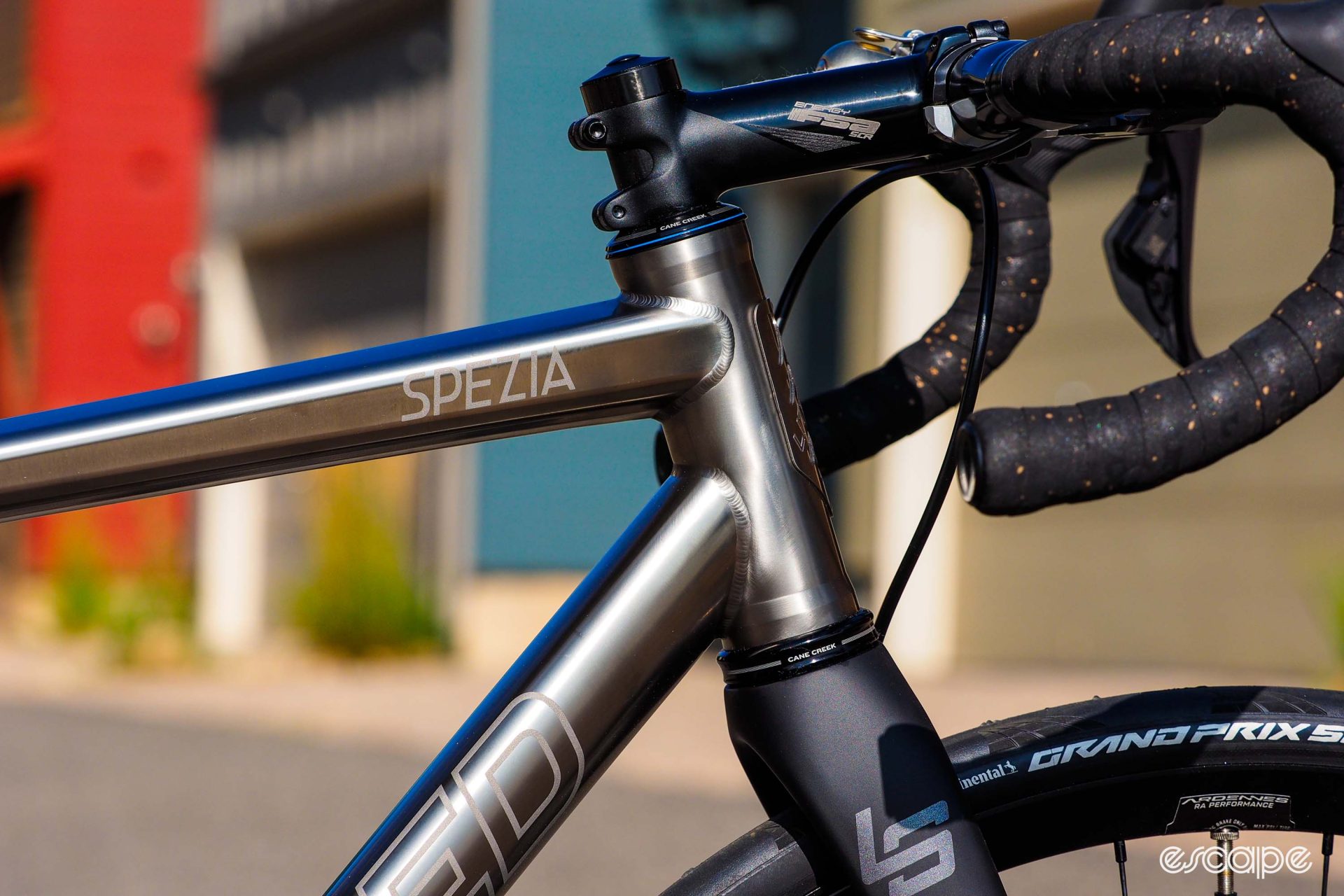
Other details include a replaceable machined aluminum rear derailleur hanger, SpeedRelease-compatible rear dropouts, a blissfully normal external seatpost clamp, and a traditional clamp-on front derailleur mount for a cleaner look should you decide to go with a 1x drivetrain.
Should you prefer to go with completely hidden routing, Litespeed offers a variant of the Spezia called the Spezia FI, built with a Chris King Aeroset, Enve integrated carbon fiber stem, and a dedicated carbon fiber fork that keeps all the lines tucked away. Too many years spent in front of a bike shop workbench mean I’m still no big fan of fully internal routing, but I’ll applaud Litespeed for at least specifying a Chris King headset with its legendary bearing durability.
Geometry-wise, the Spezia is quite interesting.
One might expect that Litespeed would build its top-tier road racing model with a particularly aggressive layout, but let’s get real here: the person buying a Spezia probably isn’t regularly competing in weekend criteriums. The stack is taller than I originally expected, for example, and the reach also a bit shorter – 555 mm and 380 mm on my medium-sized tester. Steering geometry is quite quick, however, with a very traditional 73° head tube angle, 45 mm of fork rake, and trail dimensions in the mid-to-high 50s, depending on tire size.
“Our production geo has gained 0.5-1.5 cm (based on size) in stack over the last few years, while reach has remained the same,” DeVaney said. “Honestly, I feel our active audience is more of a fondo-focused customer than a USAC racer. Over 90% of our custom requests actually move more so into the higher/shorter realm.”

Litespeed offers the Spezia as a bare frameset as well as two complete builds: one with Shimano Ultegra Di2, the other with Dura-Ace Di2. Both include a wide range of customization options for wheels and components, as well as a broad selection of finishes (including color anodization). Should you absolutely abhor press-fit bottom brackets, you can even request a T47 threaded one instead.
Prices for a complete Spezia start at US$7,900 / AU$12,280 / £6,475 / €7,450, but bumping up to Dura-Ace Di2 and ticking all of the option boxes inflate the final tally to just shy of US$13,000 / AU$20,190 / £10,645 / €12,260 – and that’s assuming you stick with a stock geometry instead of paying the US$1,200 / AU$1,865 / £980 / €1,130 premium for an optional fully custom setup.
I went with a more base-level build for my test sample, with a Shimano Ultegra Di2 groupset, Hed Ardennes RA Performance aluminum clincher wheels, an upgraded Litespeed titanium seatpost and optional etched graphics instead of the standard vinyl decals. Retail price for that setup comes out to US$9,200 / AU$13,700 / £7,210 / €8,336 – not horrible all things considered, although it still strikes me as a little high considering Litespeed sells a similarly configured bare frame for US$4,520 / AU$7,000 / £3,700 / €4,260.
Not quite what I expected
I’ve ridden a whole bunch of titanium drop-bar bikes over the years, and of course, some have been more distinctive than others. I remember the snappiness and stoutness of the Alchemy Eros, for example, and the positively electric ride quality of the Moots Routt RSL. The old Ritchey BreakAway Ti/Carbon travel bike that felt oddly dead. But this Litespeed Spezia? It was a bit of a conundrum for me.
The oversized front triangle feels exactly as you’d expect given the outsized tubing dimensions. It’s highly resistant to twist, and feels especially stout when climbing or sprinting out of the saddle. Handling is impressively precise when carving tight downhill corners, and unlike softer frames that can sometimes feel disconnected between your hands and the tire contact patch, there’s no question what’s going on up front here. It’s direct and communicative, and rich with feedback.
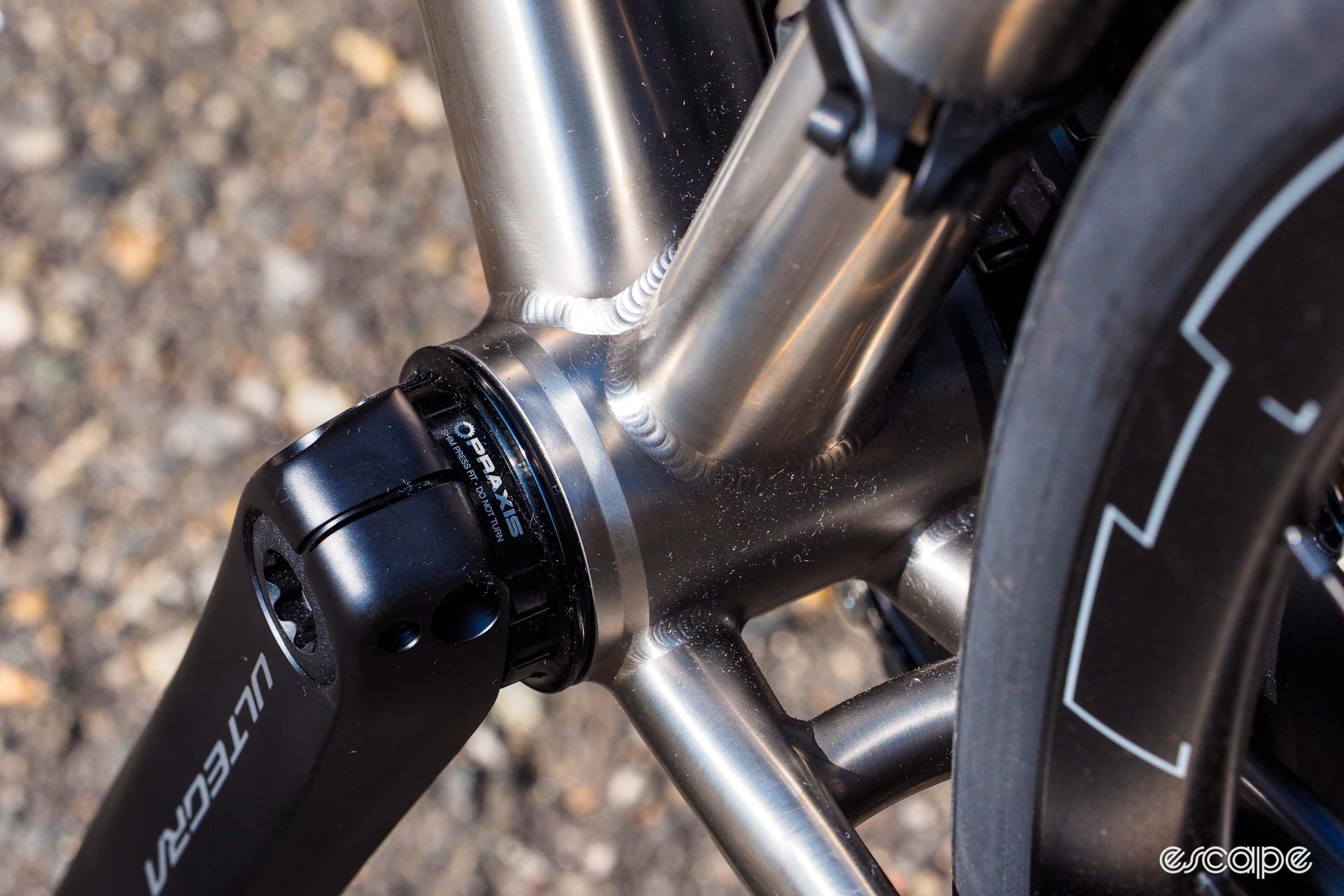
That ironclad sense of rigidity unfortunately doesn’t carry through to the back end, though – not in the way you want, anyway.
The rear triangle generally feels fine in steady-state cruising and when climbing in the saddle, but there’s noticeable flex otherwise, and hard pedaling efforts are answered with dulled responses that don’t provide the returns you’d expect from big out-of-the-saddle jumps. There’s enough flex, in fact, that I could consistently get the rear disc-brake pads to rub on the rotor during even mild sprints.
But yet somehow that flex doesn’t translate into rear-end comfort, which I’m guessing is due to the oversized 31.6 mm-diameter seatpost. Likewise, the generously proportioned front triangle doesn’t budge much, either, especially on bigger impacts that are positively jarring if you’re not prepared for them. I wouldn’t say the Spezia feels harsh overall, but I certainly wouldn’t describe it as particularly comfortable. Going with higher-volume tires certainly boosts the comfort factor, but not everyone will want to go that route.
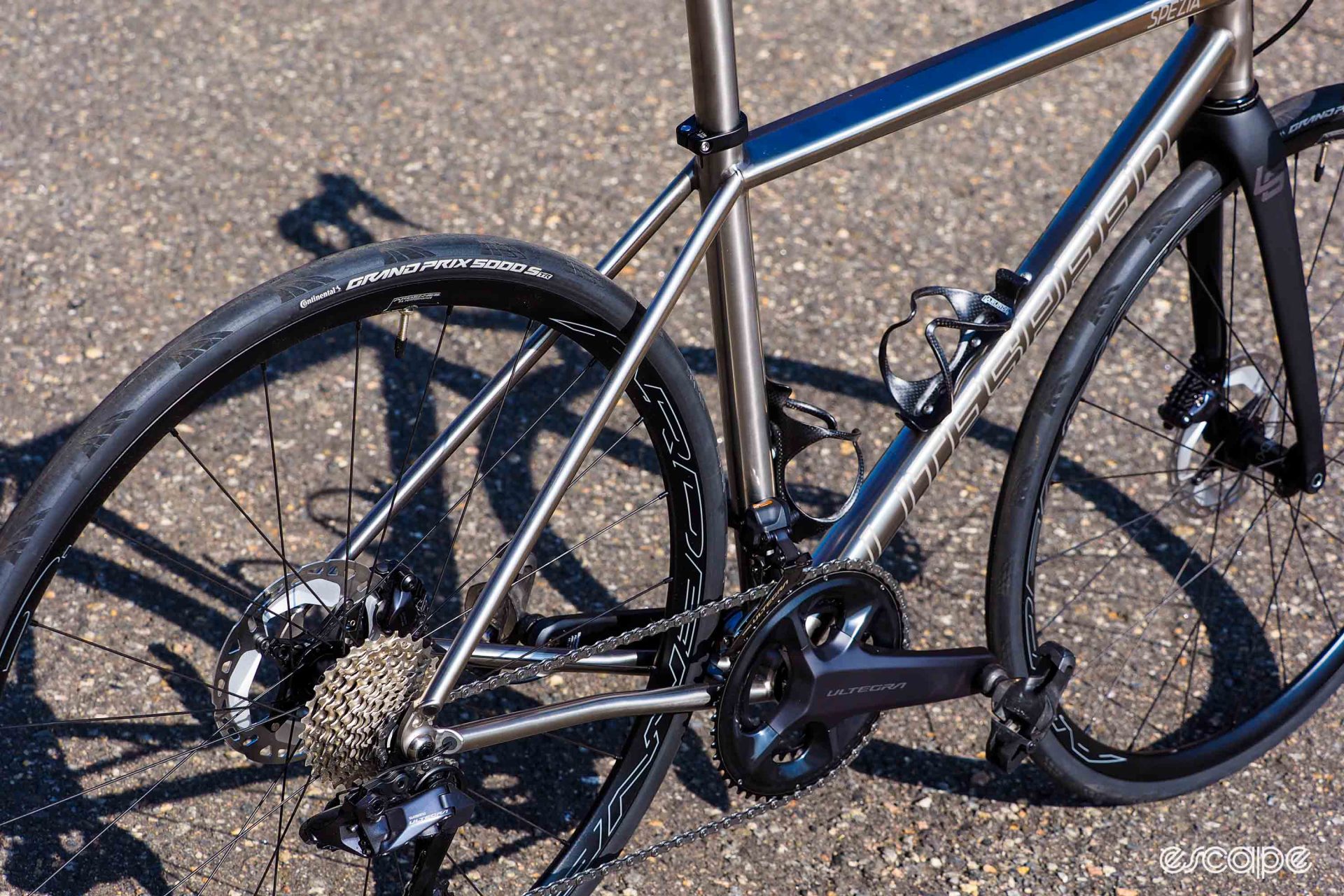
Perhaps the biggest disappointment was that I found the Spezia lacking in that distinctly titanium feel. Titanium frames aren’t generally considered the stiffest or lightest around, but the material is renowned for its liveliness – the subtle sensation of springiness that adds zing and personality that’s rewarding both in a tactile sense and in a performance one. It goads you to go faster and harder.
Some of titanium’s damping qualities still ring true, and coarse road texture is still reasonably filtered out. There’s feedback, but without the eventual hand numbness. But overall, something is just … missing.
Granted, Litespeed doesn’t bill the Spezia as a comfy cruiser. Instead, Litespeed says it’s “the new high bar in high-performance road riding,” albeit one that also offers “the most discerning ride quality of any Litespeed road bike – ever.” I’ve ridden very stiff titanium frames before, and while those had similarly firm qualities, they still managed to deliver that characteristic titanium electricity along with a more balanced feel that didn’t feel so disjointed in the middle. They were stiff, but stiff everywhere – particularly under power – whereas the Spezia, for whatever reason, comes across to me as feeling a little flat.
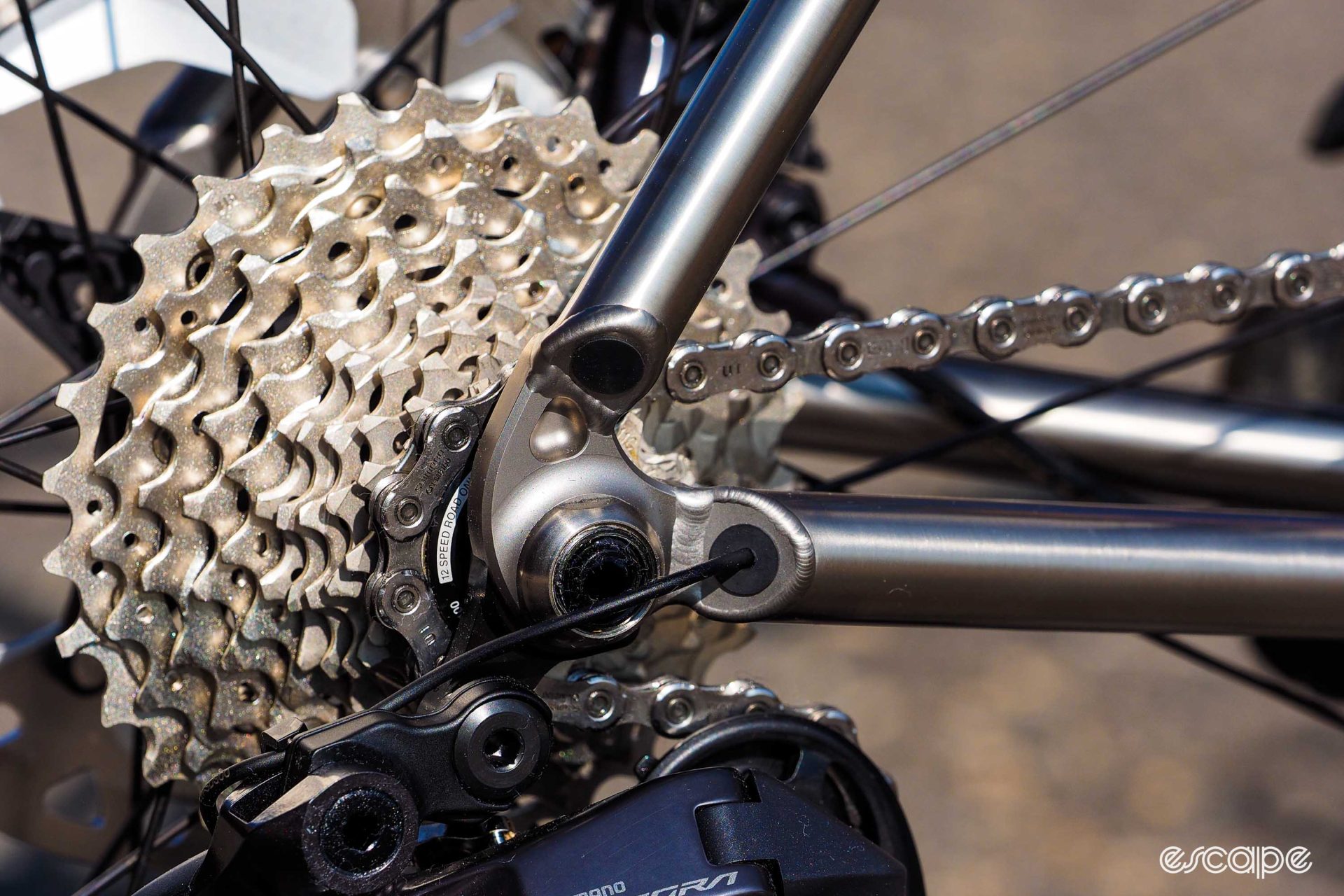
Misgivings about the ride quality aside, handling is definitely a very bright spot for the Spezia. As much as I like bikes with long front centers and short stems on gravel, I still prefer more traditional layouts on the road, and the Spezia delivers that in spades with a quick and intuitive initial turn-in, and lots of bite through corners since the shorter top tube and longer stem puts plenty of weight on the front wheel. The compact 98.4 cm wheelbase on my medium-sized tester is happy to flick side-to-side through successive corners, too. Combined with that quicker steering, and sinuous descents are an absolute blast.
One little nitpick: Litespeed’s internal routing setup for the rear brake hose is cleanly done, but since it’s not fully guided through the down tube, it requires foam tubing to keep things from rattling. I’m not sure if the person assembling this bike forgot it completely or didn’t use enough of it, but my test bike rattled annoyingly on bumps. Not ok.
Build kit breakdown
Shimano may be occupied lately with its delaminating crankset fiasco, but that doesn’t change the fact its current-generation 12-speed wiredless Ultegra Di2 stuff is simply fantastic (assuming the crank issue really has been fixed). Shifts are flawlessly smooth and quiet both front and rear, and they’re also noticeably quicker than any of SRAM’s AXS setups – either single shifts or multiple ones. The multiple shift buttons per lever makes for less intuitive action than SRAM’s eTap layout, but even that can be largely remedied by reprogramming the buttons.

The lever ergonomics are more of a personal thing, but the small-diameter bodies should still work well with most hand shapes and sizes, and there’s a good range of reach adjustment on the brake lever blades. As compared to the latest SRAM AXS stuff, the hoods also seem to fit a little better and definitely offer a smoother transition to the bar.
The hydraulic disc brakes are largely the same as they’ve been, but that only means they’re still excellent: lots of power, a very firm lever feel, a well-defined contact point, and good pad clearance at the rotor. They do, however, still get a little loud when hot (or wet), and the periodic “ting-ting-ting” sound you get after a long descent with lots of braking also still usually takes a few seconds to dissipate while the rotors cool down, but otherwise, I’ve no complaints there.
Given the steady bombardment of reviews and ads for carbon wheels, you’d be forgiven for feeling like they’re a necessity to even just get out the door, but the Hed Ardennes RA Performance wheels offer a solid reminder that good aluminum ones are still excellent. They’re reasonably light at around 1,575 g per set (claimed), and while the 25 mm depth and 25 mm external rim width won’t blow the doors off in terms of aerodynamic performance, the 21 mm internal width offers excellent casing support for higher-volume tires. Prior experience with other Hed wheels has demonstrated excellent long-term durability, too, and after a spate of wheels with super-loud freehub bodies that have come and gone through my test fleet, it was more than a little refreshing that these were so quiet.
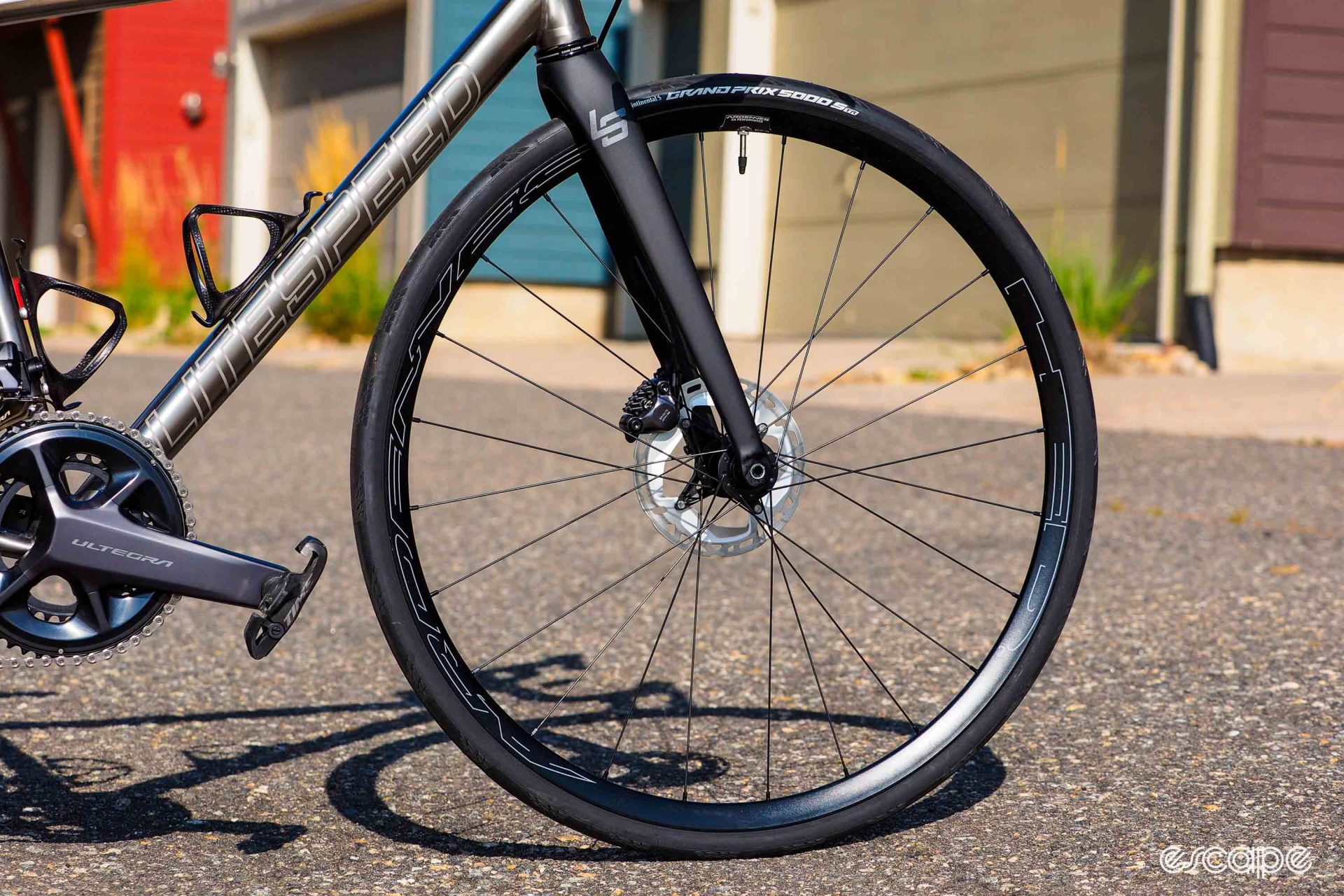
For whatever reason, Litespeed outfitted my test bike with 28 mm-wide Continental Grand Prix 5000 S TR tubeless-ready clinchers instead of the 30 or 32 mm-wide ones offered on production bikes. That wasn’t a big deal, of course, and the performance still what I’d expected, with excellent grip, a fast roll, and easy tubeless inflation. Mounted on those Hed wheels, the actual inflated width was just barely over 28 mm. Given the firm ride quality of the frame, though, I’d personally go with one of those higher-volume options, keeping in mind that many of the newer carbon wheelsets available will push the actual casing width well past what’s printed on the label.
The finishing kit was pleasantly straightforward, and a nice reminder of easy traditional two-piece cockpits are to adjust. Neither the FSA Energy SCR forged aluminum stem or Energy Compact aluminum bar are the lightest around, but they’re sturdy units with a reasonable balance of stiffness and low weight – and I was able to get the bar tilt exactly where I wanted without having to perform any surgery or uttering any swear words. And you know what? Those extra four bolts up front didn’t bother me one bit.
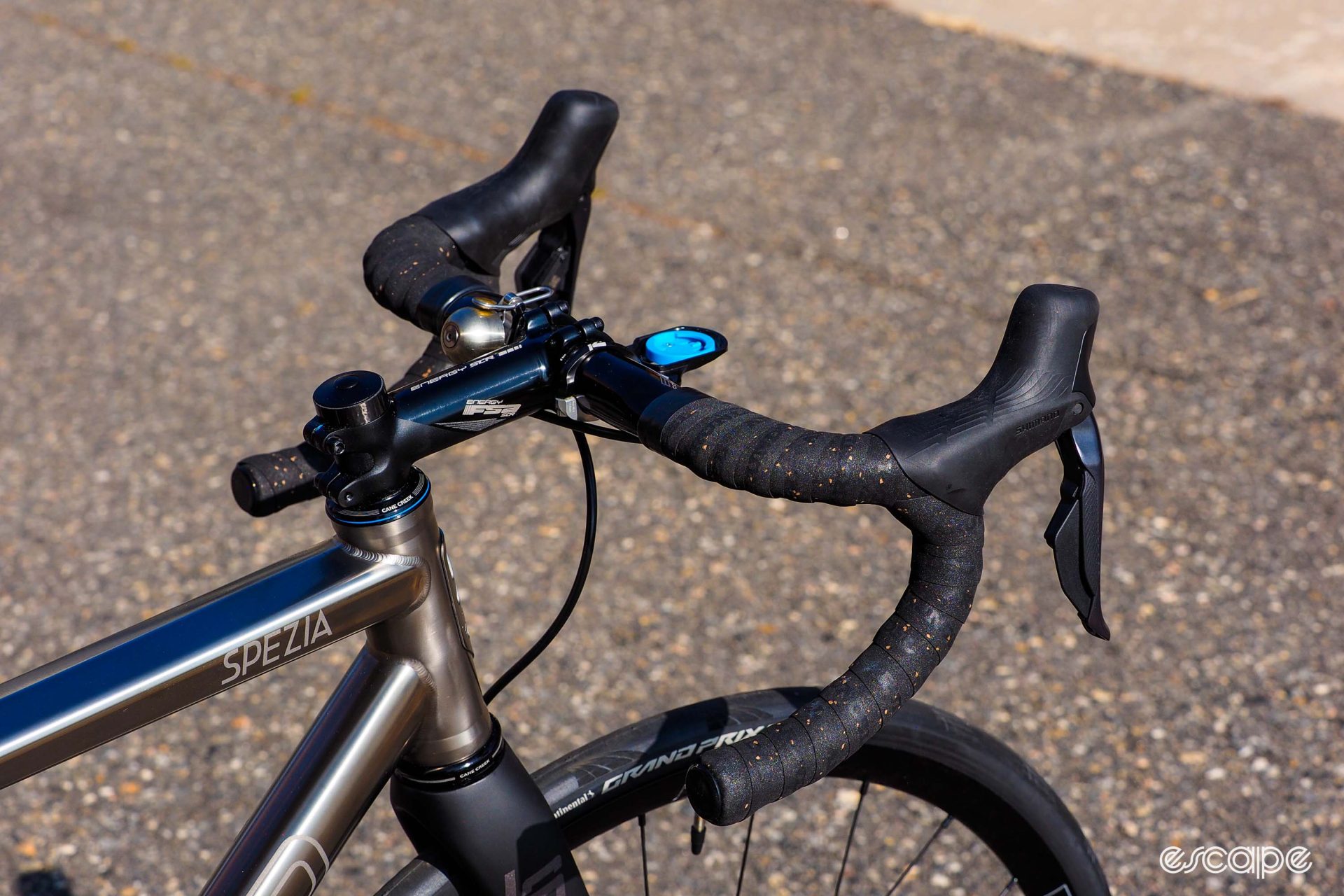
Out back, the Fizik Argo is quickly becoming one of my favorite workhorse saddles: firm and supportive, with a generously sized cutout and lots of room to move around. I would prefer a more conventional two-piece head on the Litespeed titanium post, though. It holds well, but as with most single-bolt cylindrical-style heads, it’s tricky to make fine tilt adjustments.
Pretty solid kit all in all, and were I to do it again, I’m not sure I’d change much.
Just the right amount of spice for someone
Ok, so who’s the Spezia for? It’s a gorgeous machine, very distinctive, and quite light. Handling seems about spot-on, too – at least assuming you prefer quicker and more responsive steering. That brushed titanium finish will almost certainly hold up better over time than a similarly priced carbon fiber setup, too. That firm ride quality won’t be that big of a deal on smoother tarmac, either, and I’d imagine bigger and/or heavier riders would appreciate the precise feel of the front end.
I’d say its firm ride quality might make you want to think twice if you crave a smoother feel, however, especially if you don’t want to move to bigger (and, thus, heavier) tires. More powerful riders looking for a particularly responsive ride under power might be disappointed in the rear-end flex, too.
Litespeed may not agree, but I liken the Spezia to a sports car whose owner primarily wants to use it to zoom around town, but rarely dips past even half-throttle. It’s definitely pretty, but this one’s a little too quirky for me.
More information can be found at www.litespeed.com.
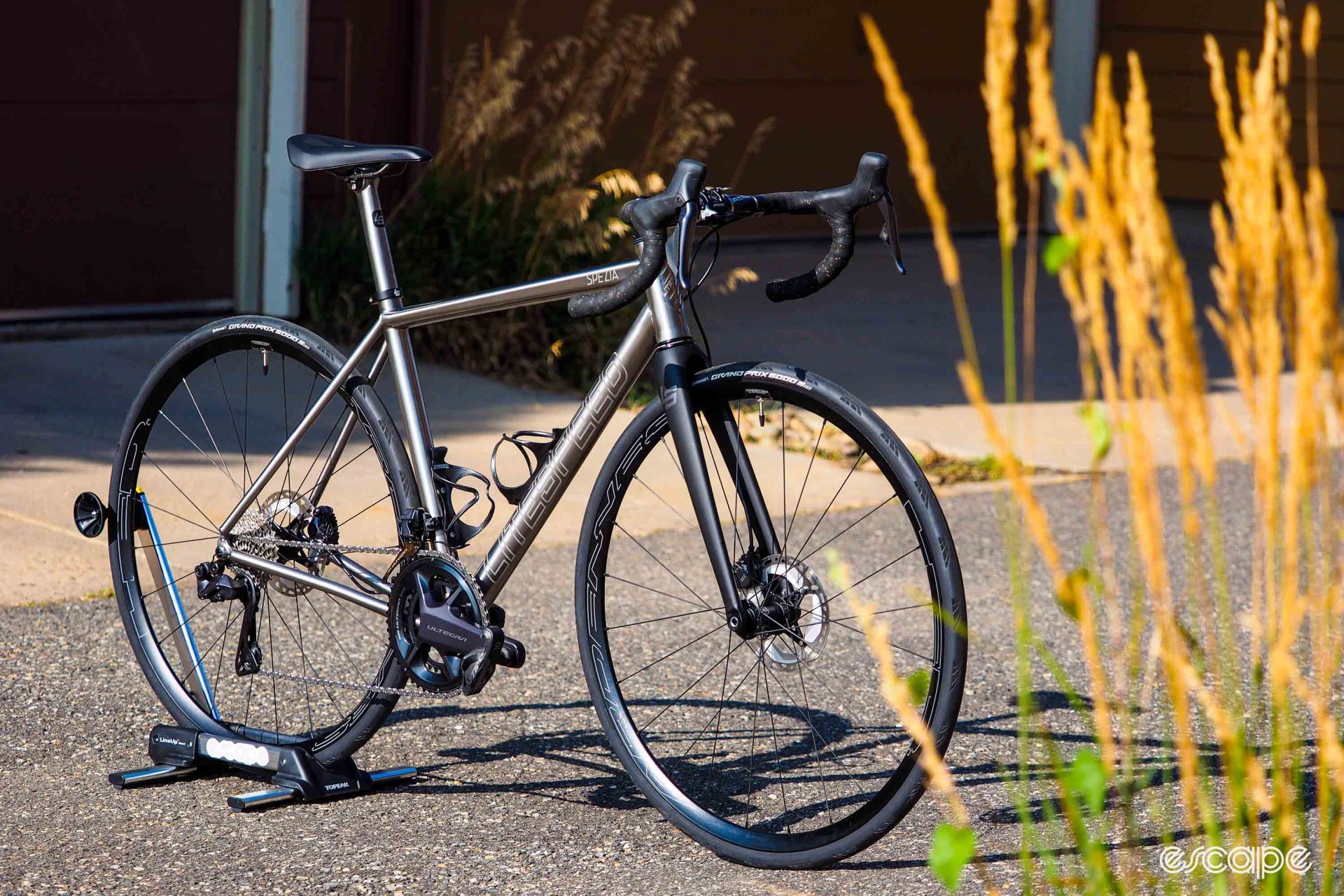
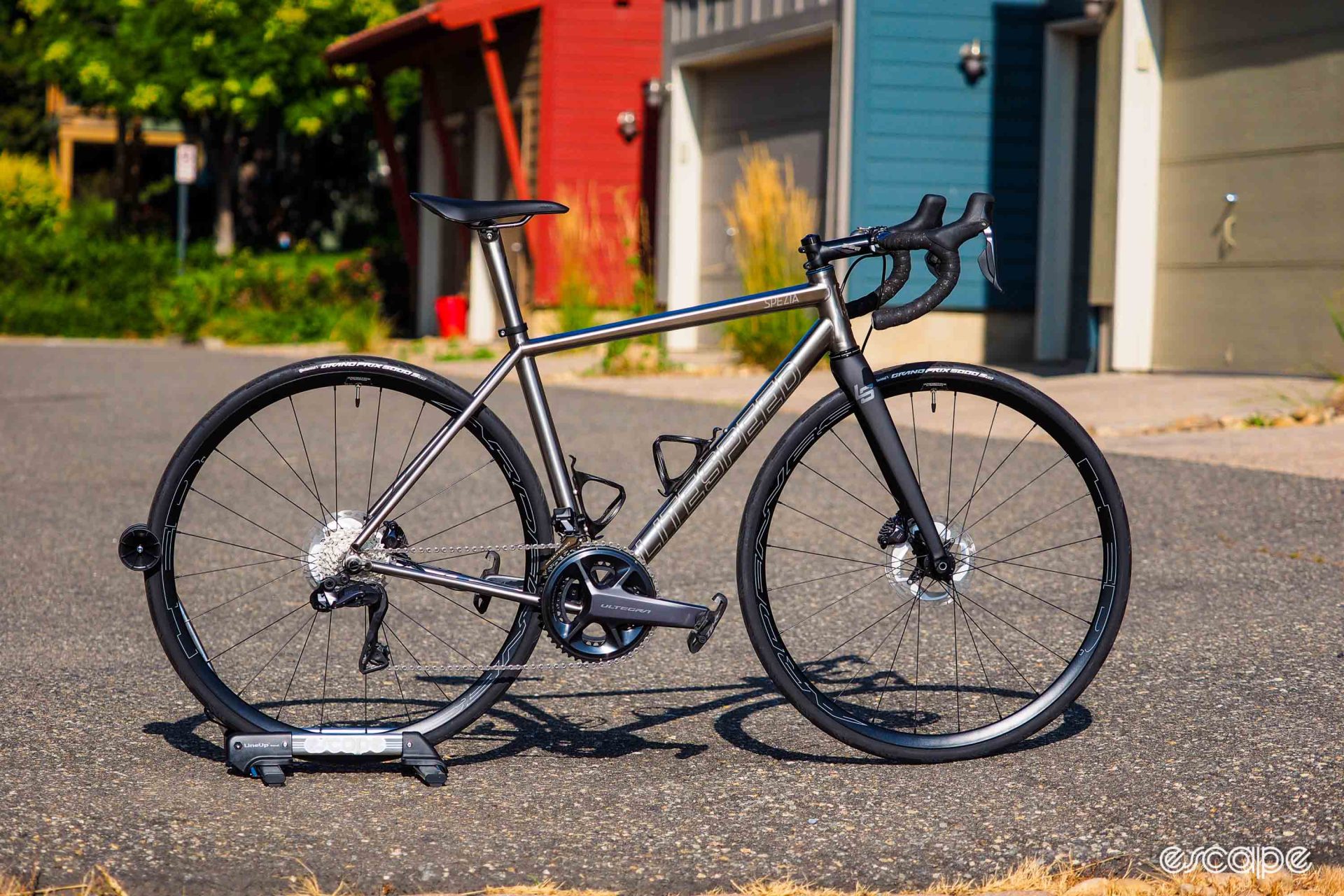
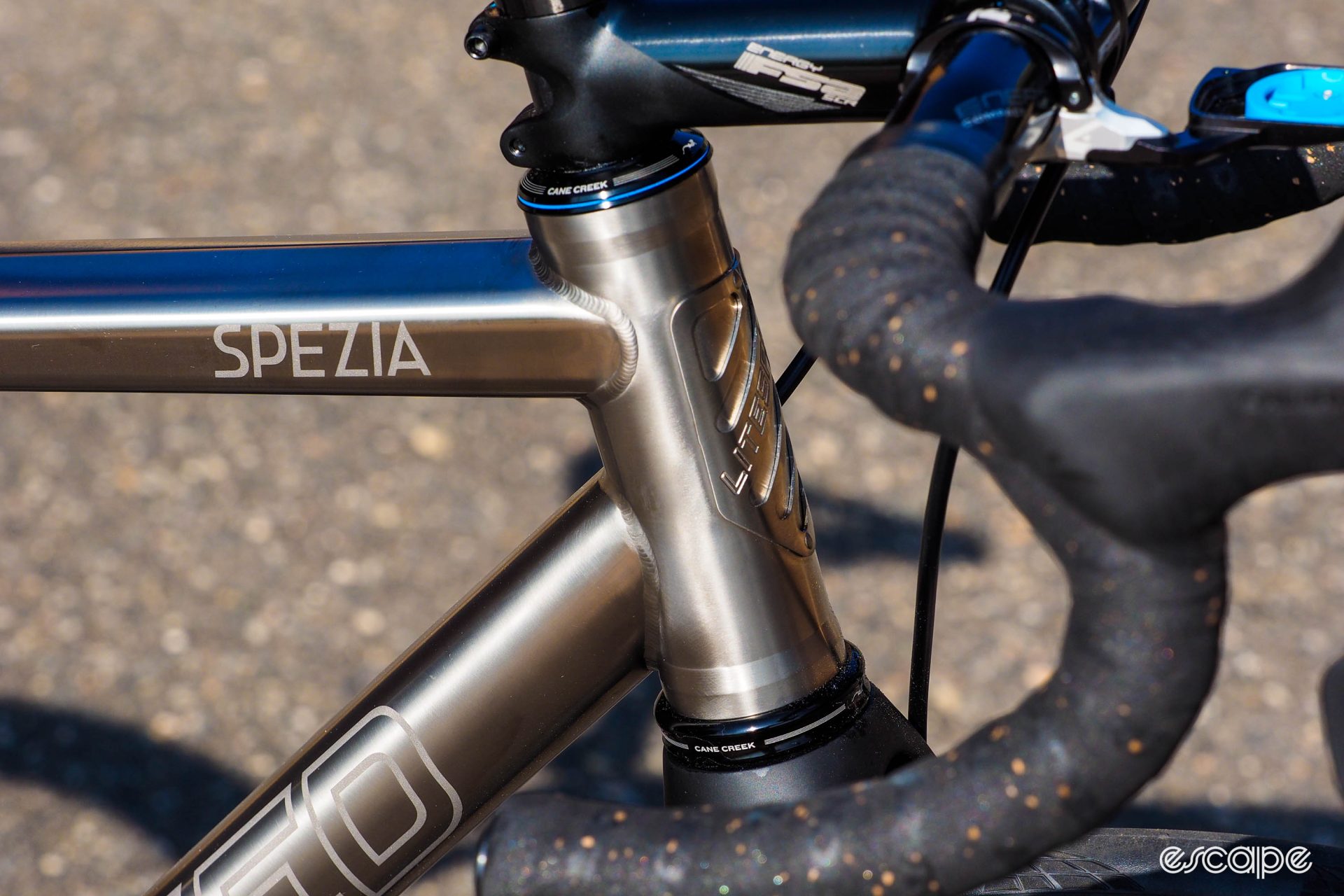
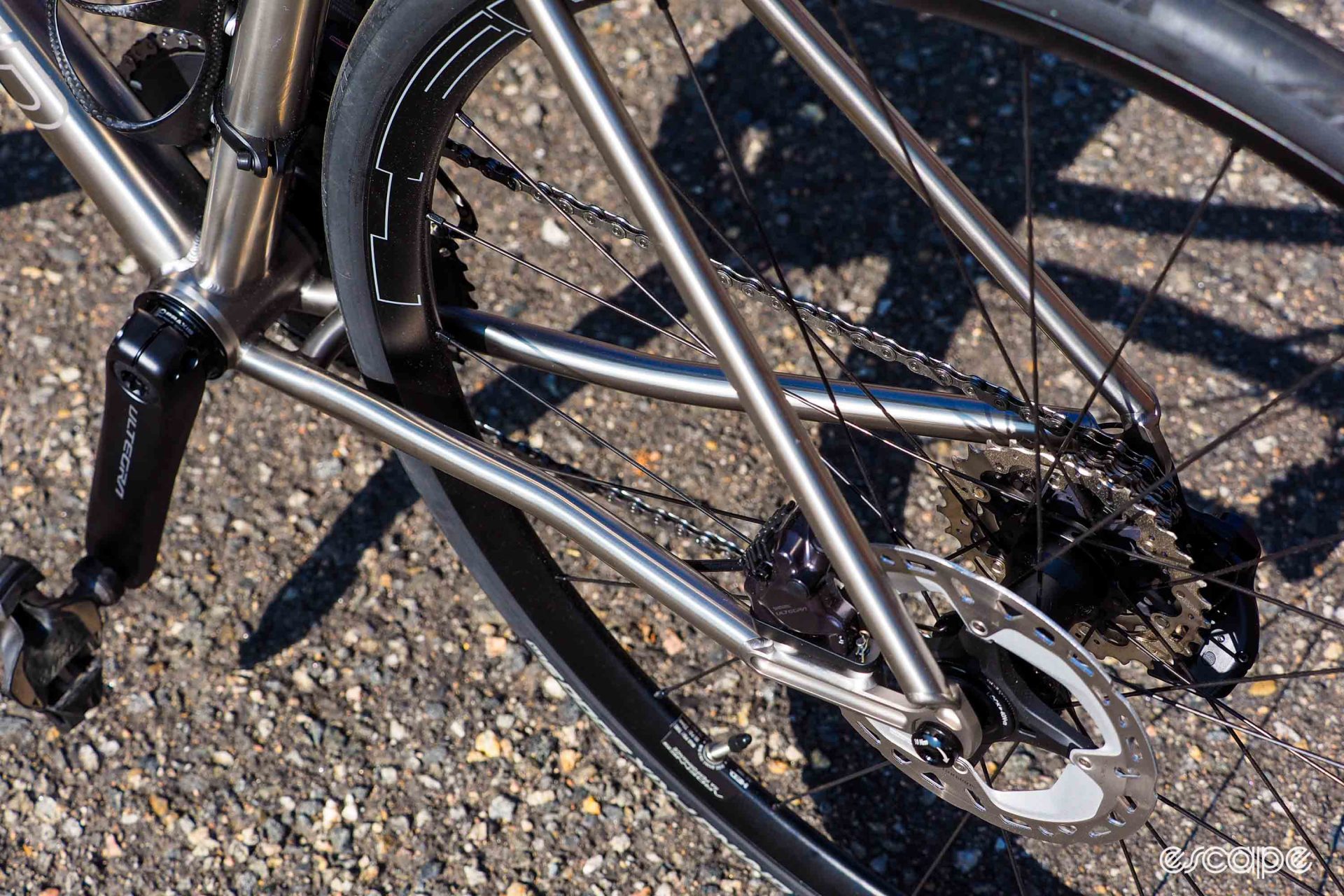
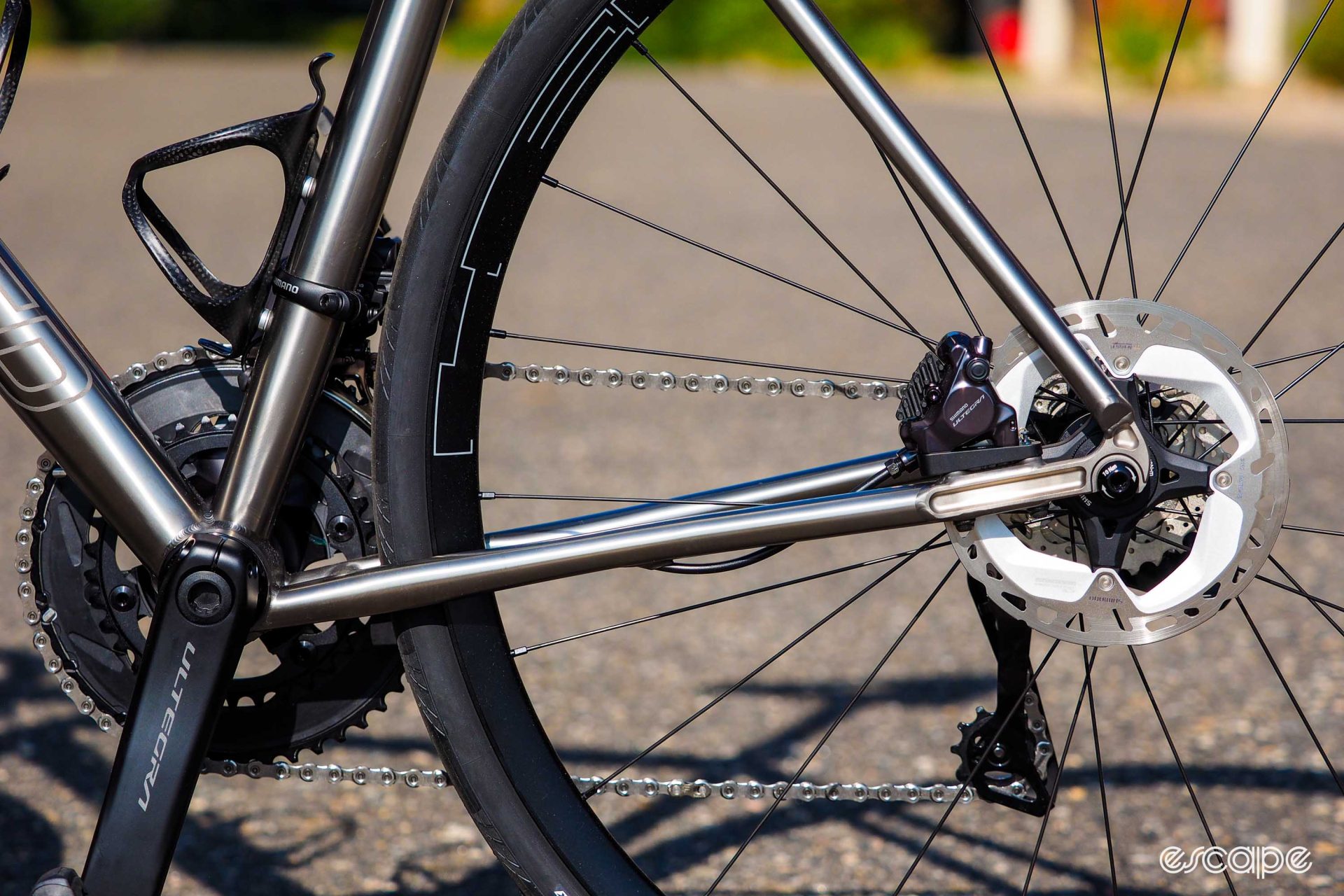

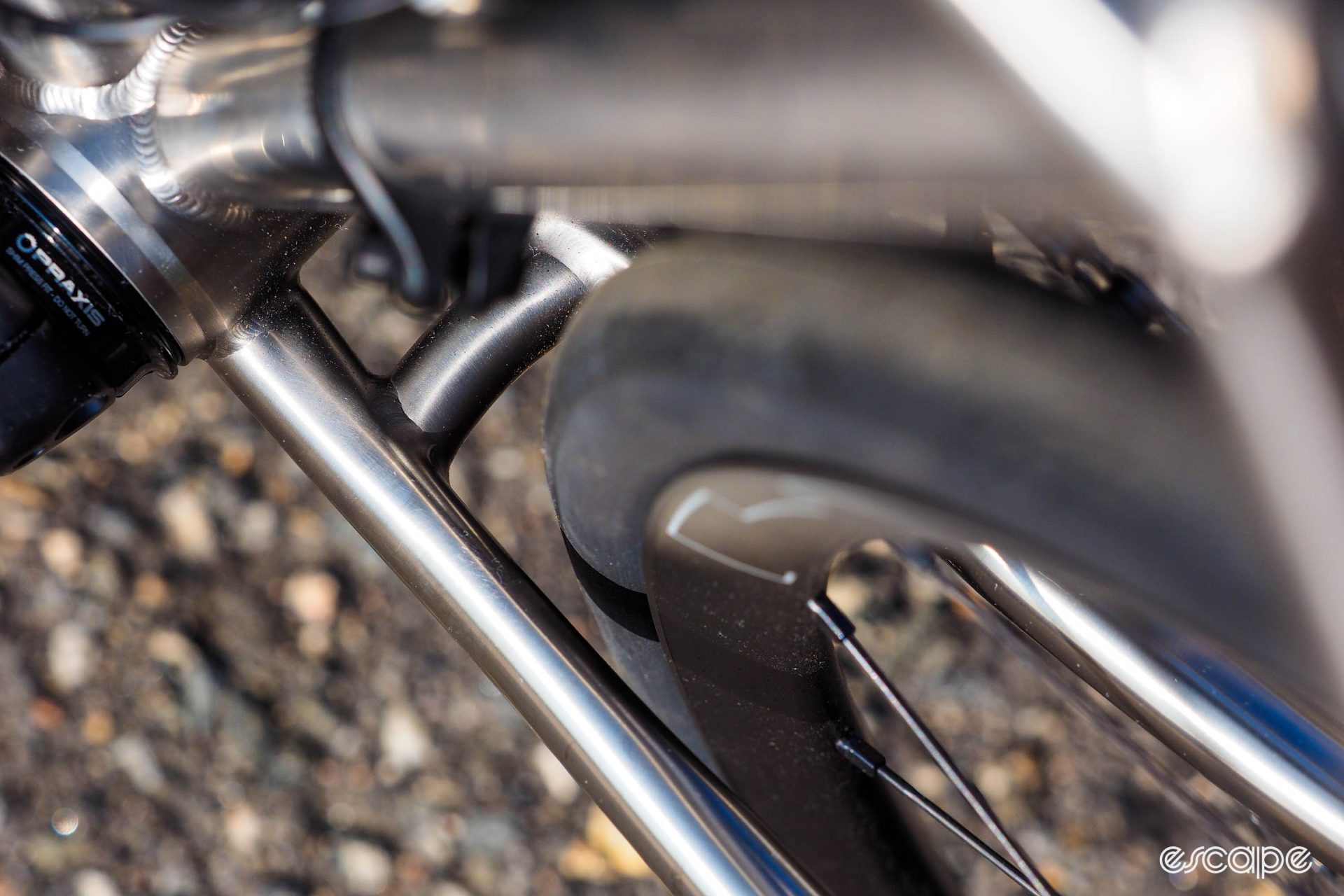
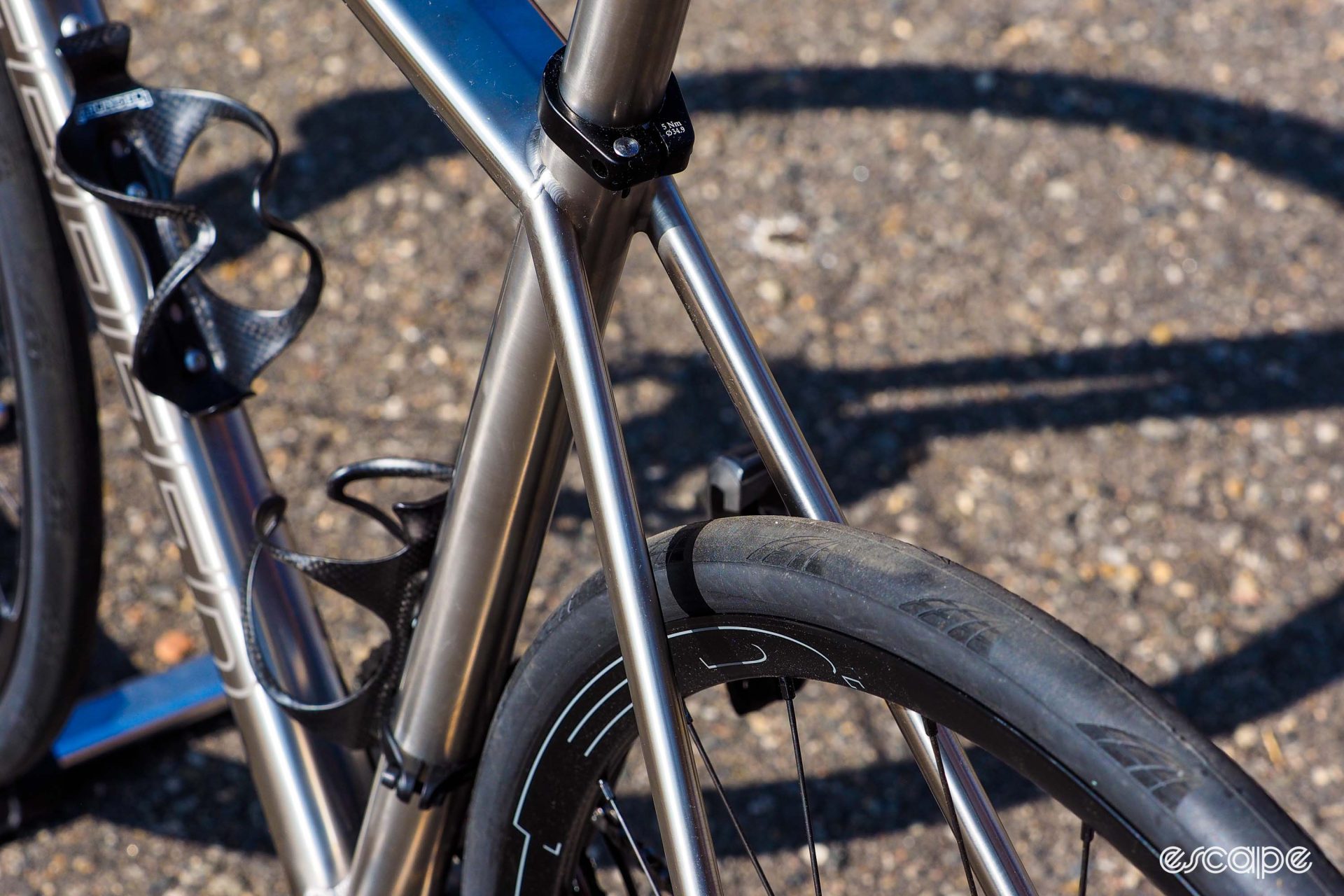




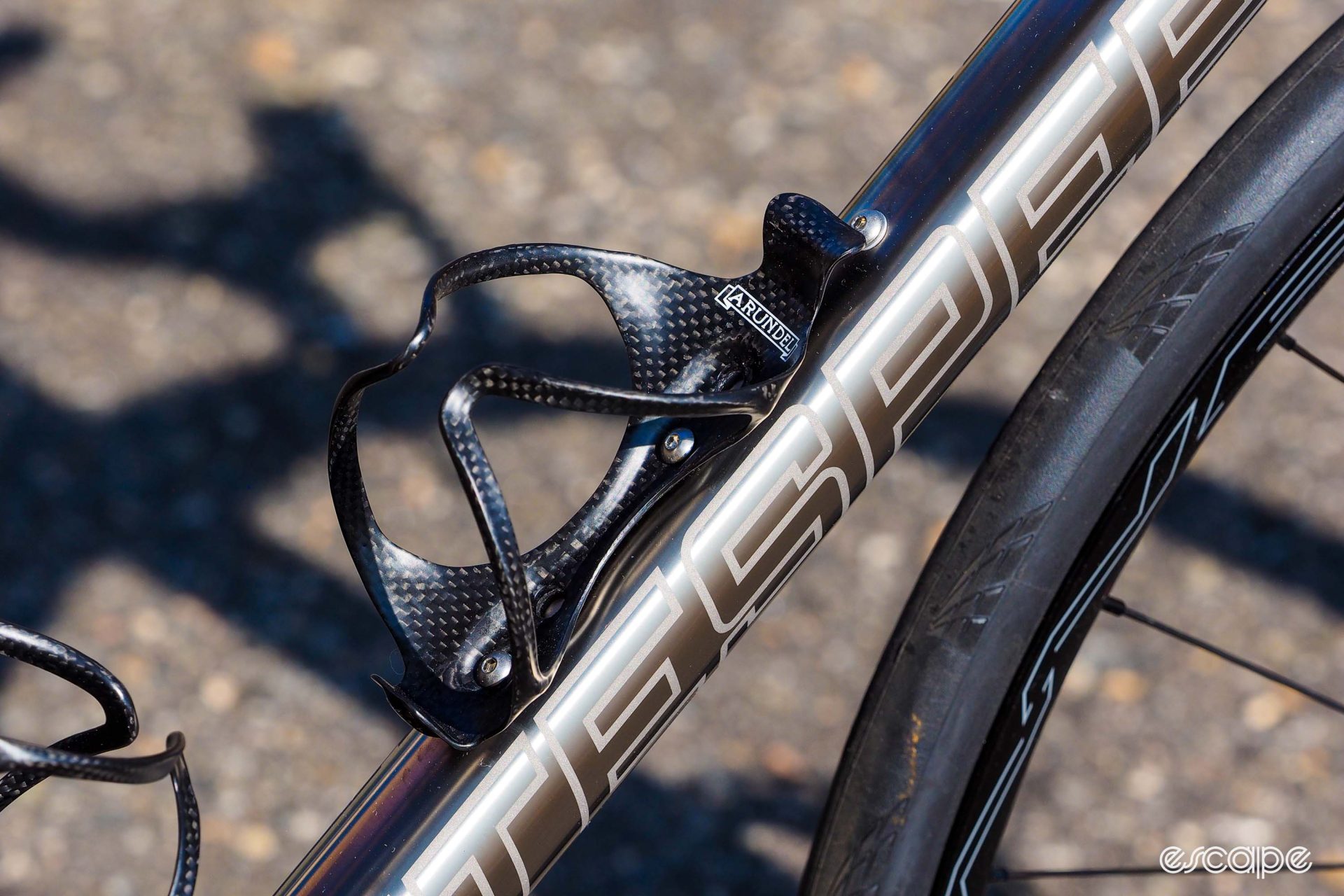
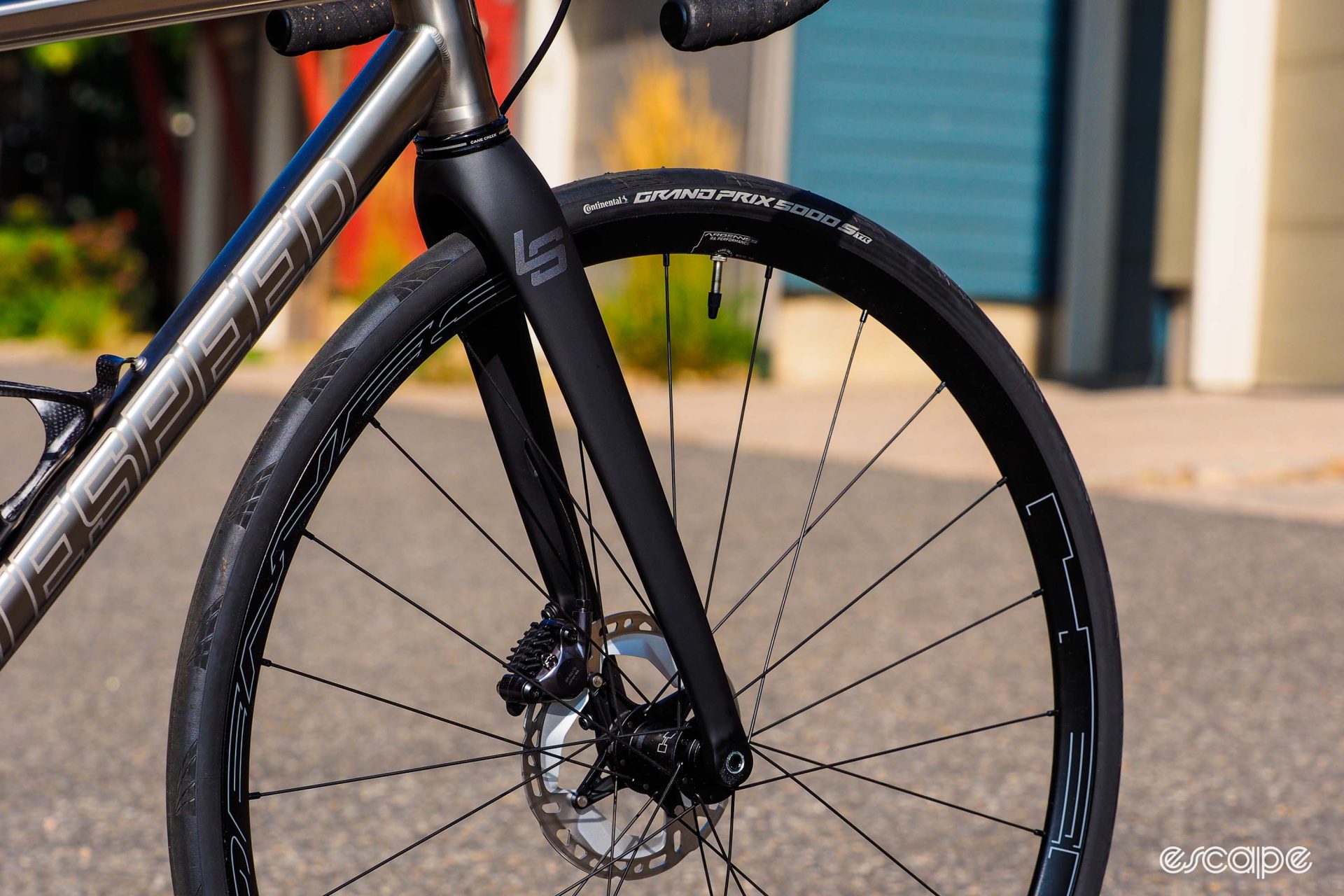
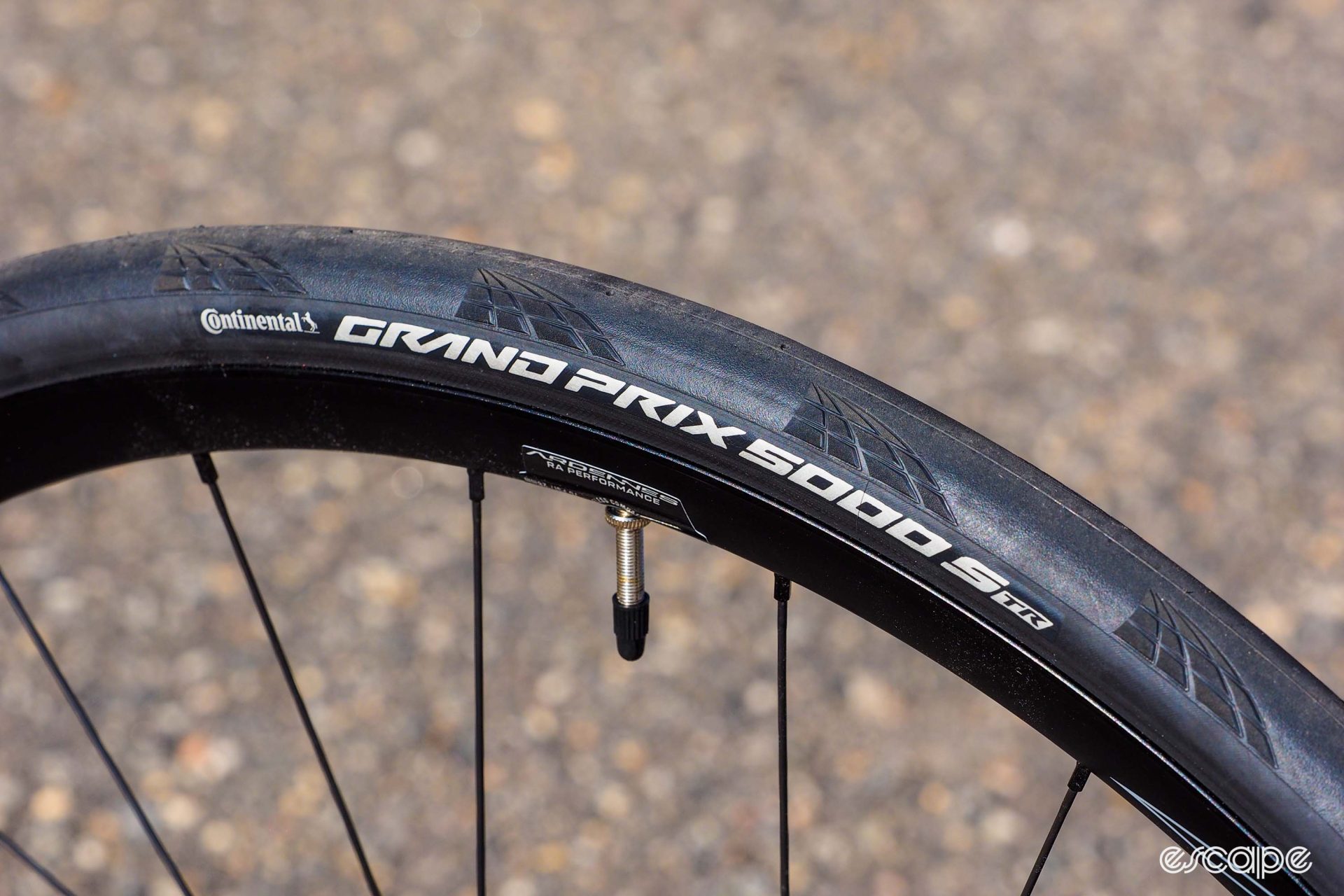
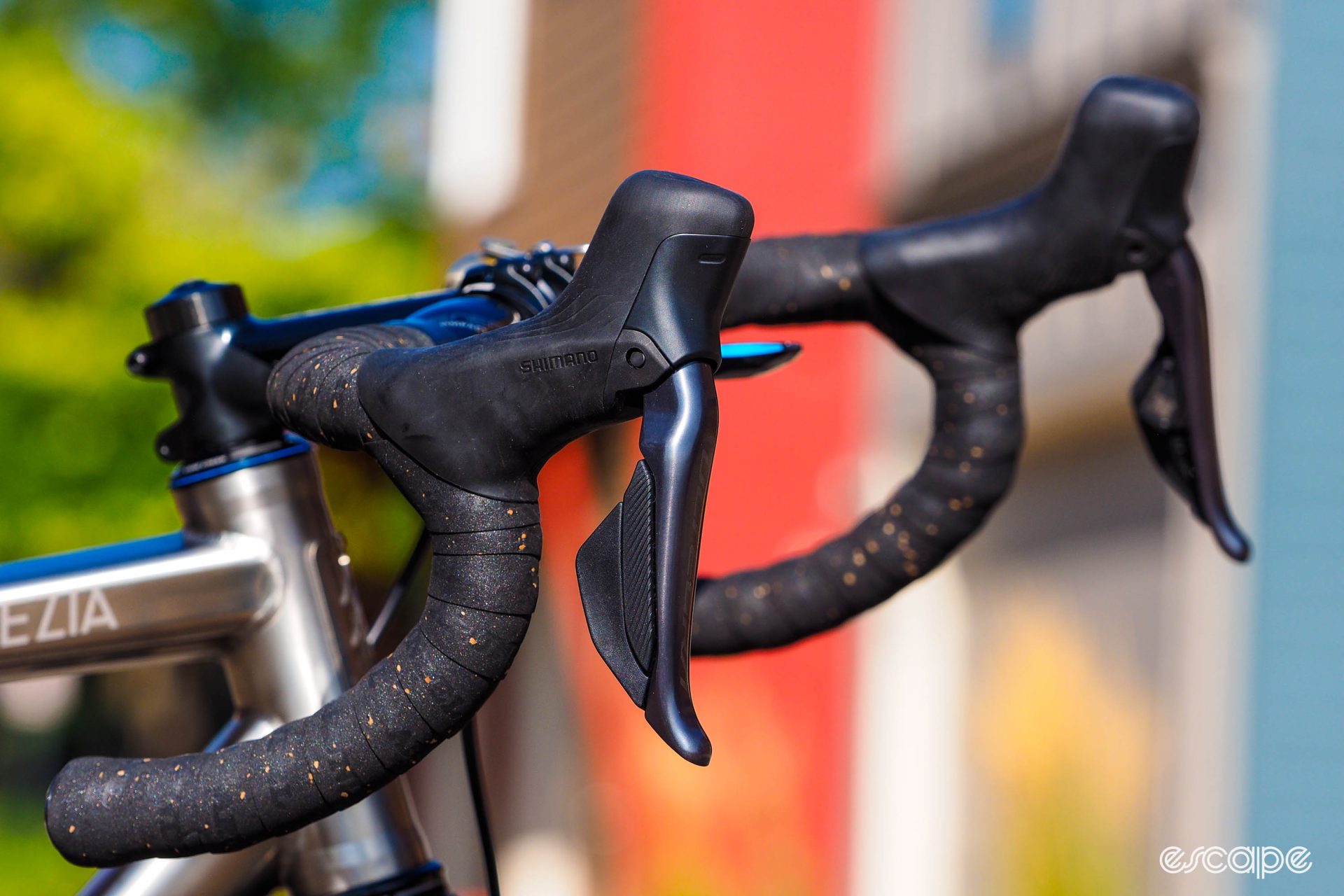
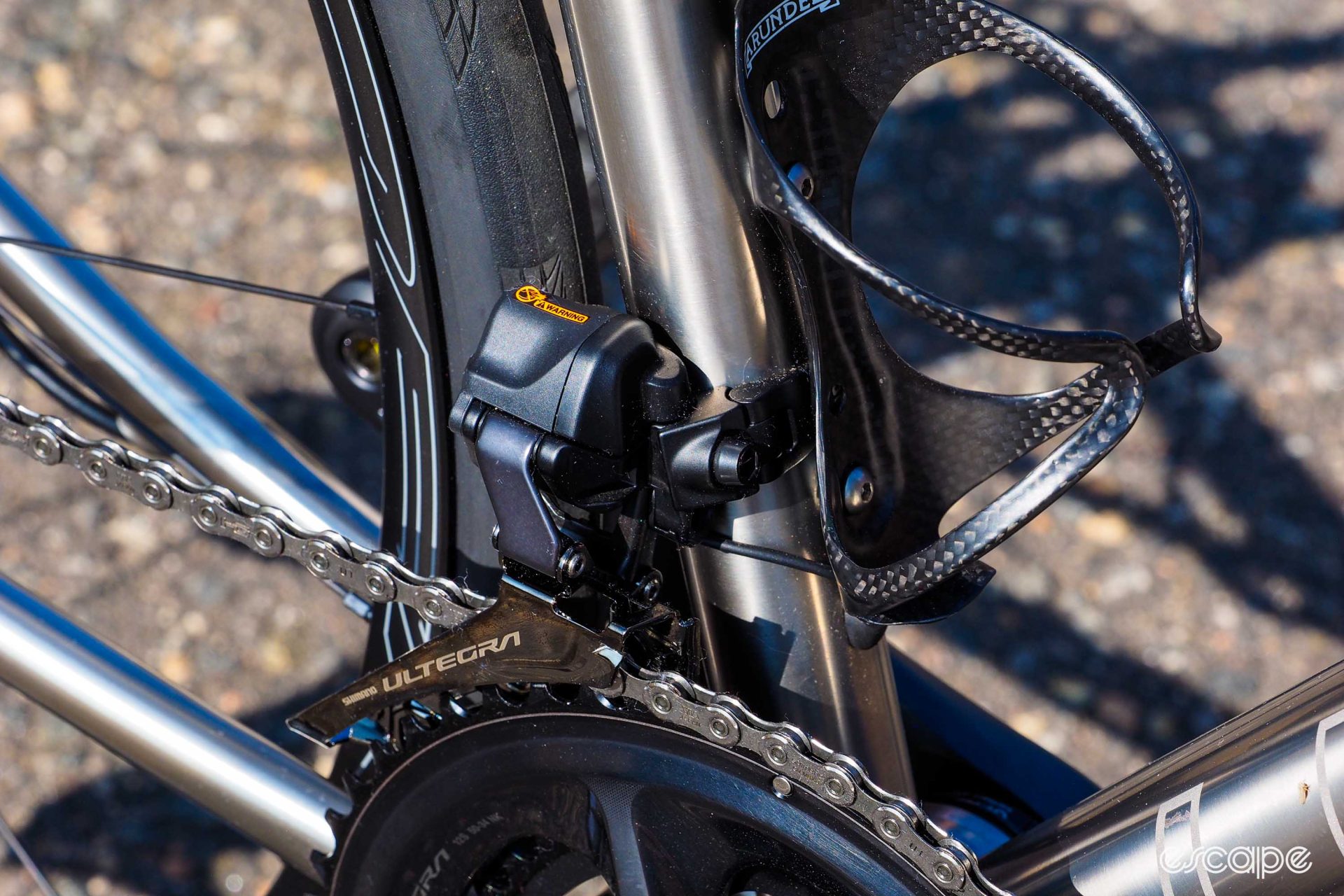
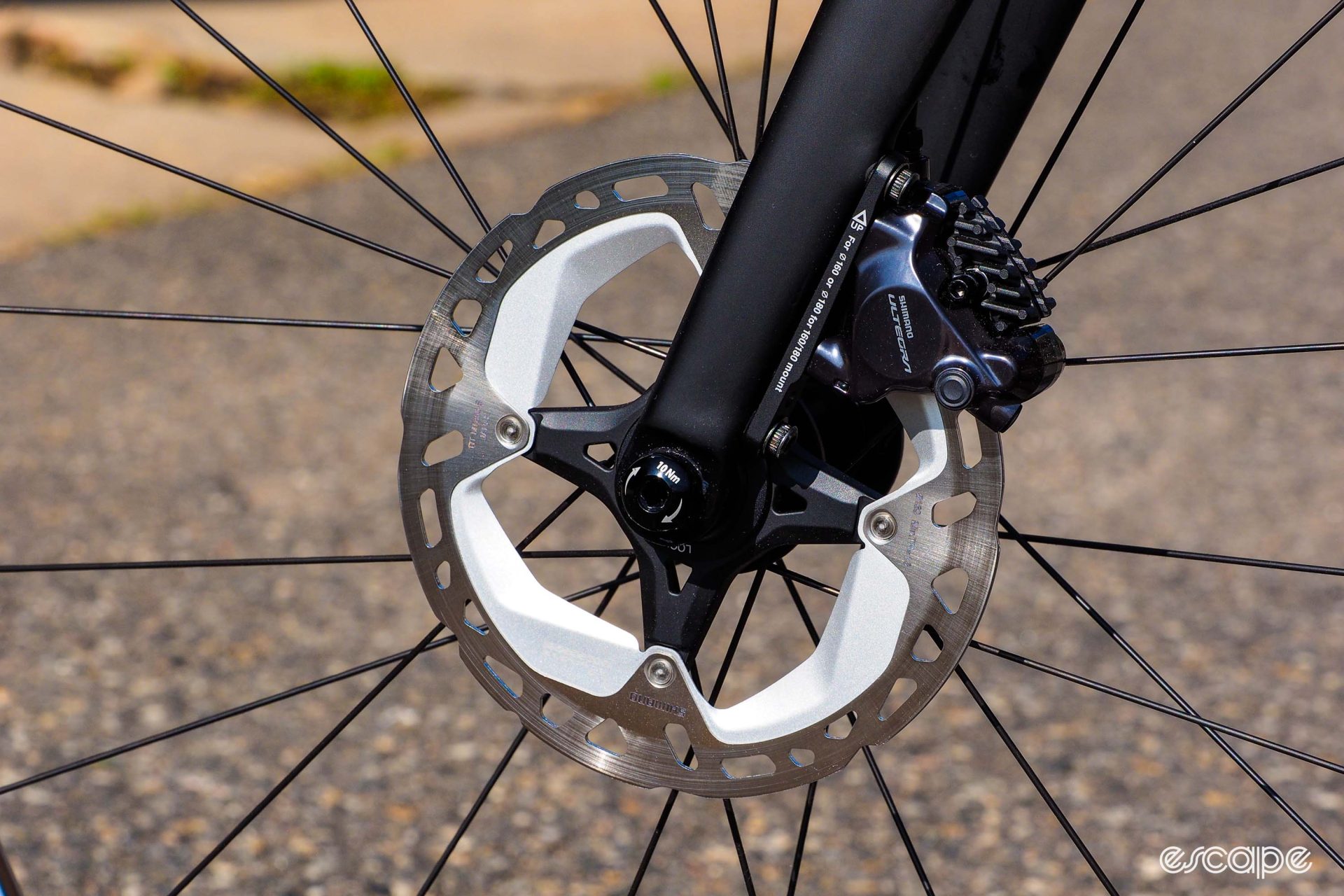
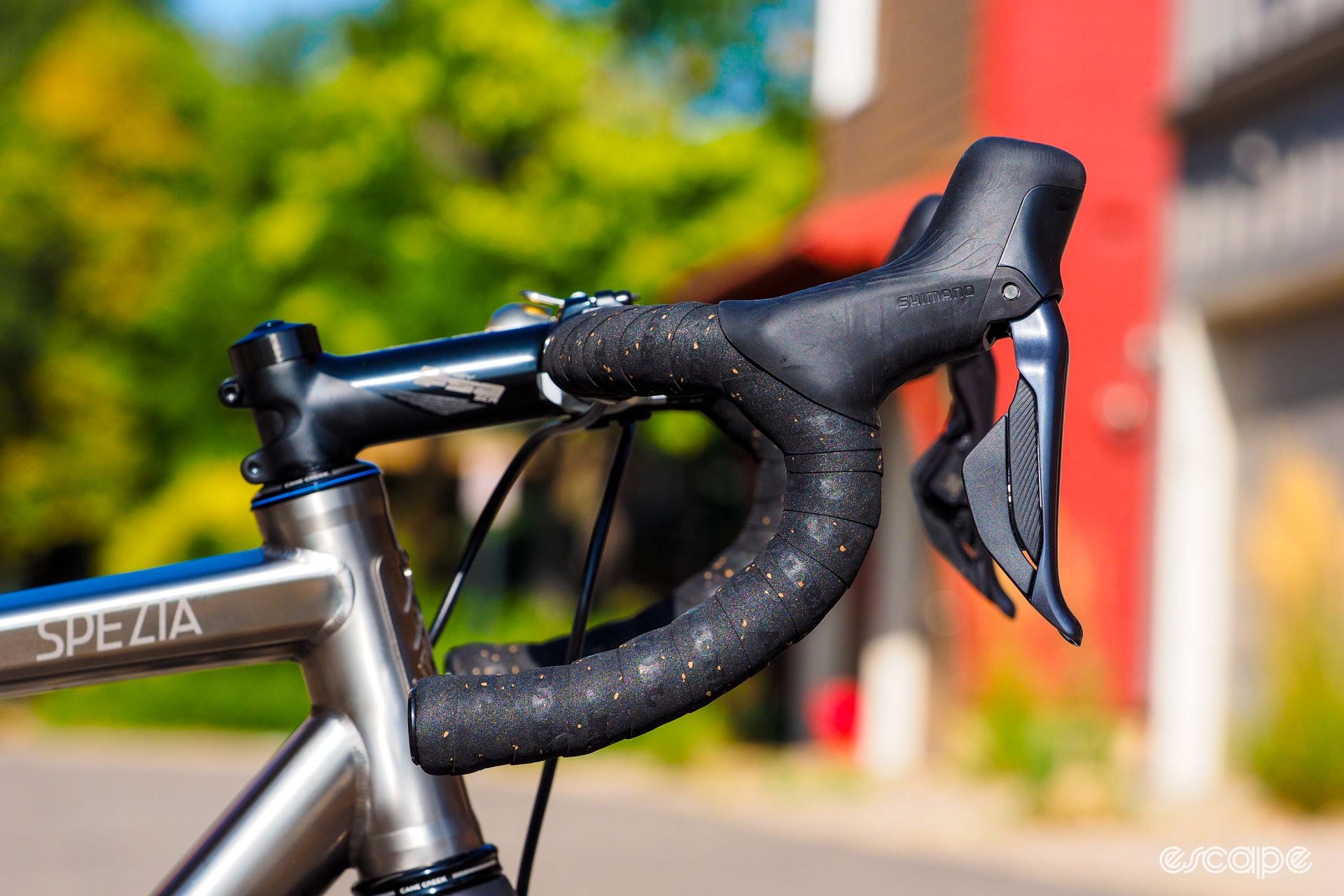

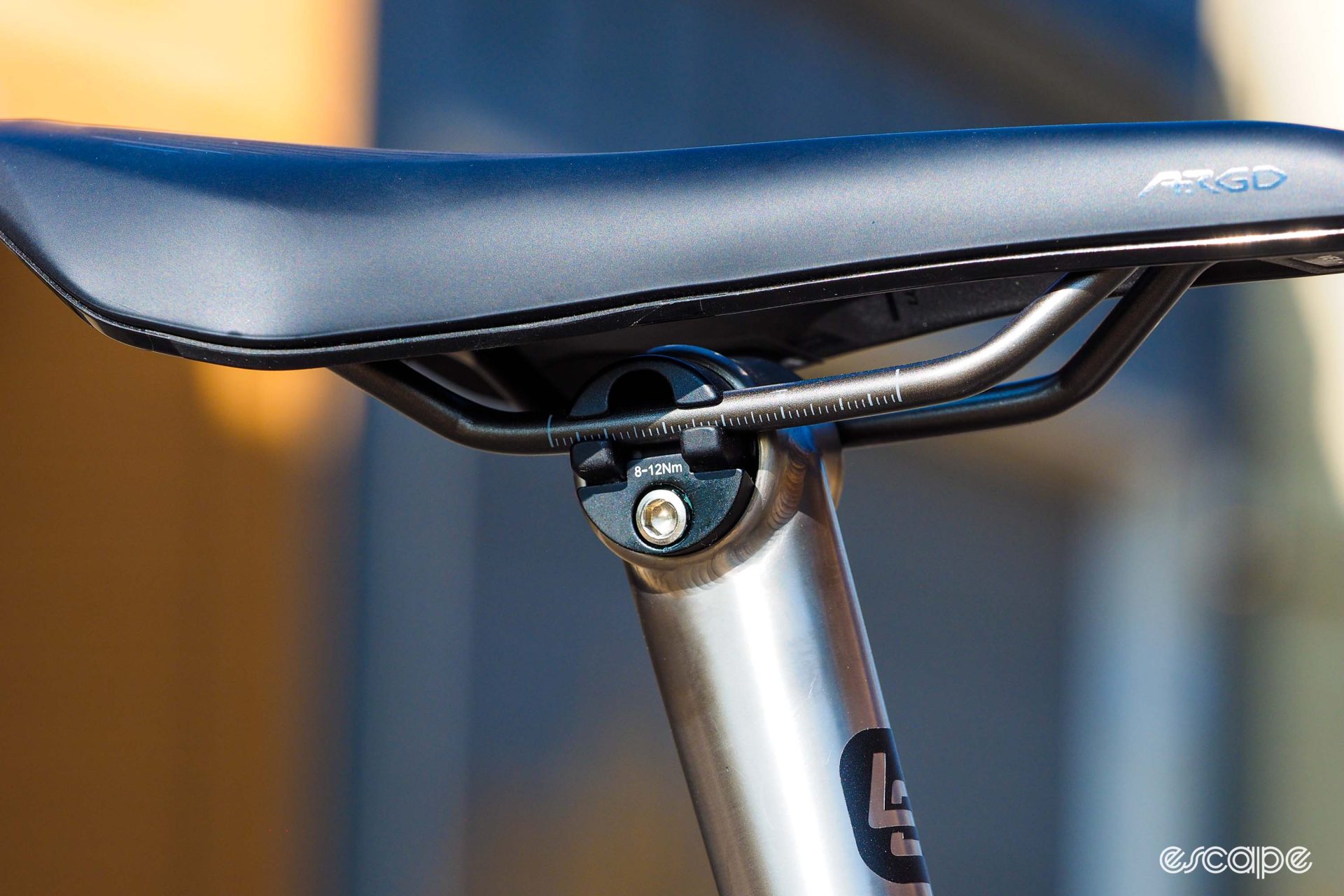

What did you think of this story?

